Interview with Bonnie Blaimer

Searching for Melissotarsus ants under tree bark in Gorongosa National Park, Mozambique. (© L. Chamorro)
Bonnie Blaimer is an assistant professor at North Carolina State University and director of the NCSU Insect Museum after receiving her academic education in Germany, at the University of California at Davis, the California Academy of Sciences, and the Smithsonian Institution, . Her publications using advanced phylogenomic methods to revise entire ant tribes have recently made waves in the myrmecological world (Blaimer & al. 2015, Ward & al. 2016, Blaimer & al. 2018). In this interview, we talk about her research on ant community structures, her new position at NCSU, and why she celebrated her 30th birthday under a tarp.
An Interview compiled by Alice Laciny 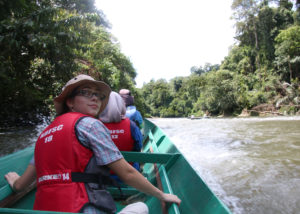
MNB: Hi! Thanks for the opportunity to interview you; I’m very excited! To start off, could you tell us a bit about yourself as a researcher and your current position?
BB: I just started this exciting new position at North Carolina State University as a faculty member. Before that, I was a postdoc at the Smithsonian for four years, after graduating with a PhD from UC Davis. My research on ants has always focused on systematics, taxonomy, and general evolutionary biology, with a particular focus on ants in the Afrotropics and Madagascar. One of my main lines of research right now here at NC State is a project together with Brian Fisher at Cal Academy of Sciences where we’re investigating ant community structure and evolution across Madagascar as a whole. So we are reconstructing a community phylogeny for all Malagasy ants and looking at how phylogenetic diversity differs across ant communities from different habitat types, such as dry forest versus humid forest, or arboreal versus ground-nesting ants. That’s a project that was funded just before I got the position here, so it was perfect timing. At the moment, we are generating the phylogenetic data, so it will be a long time before we can actually say much. But it’s a really exciting project that I’ve been wanting to do for some years and trying to get funding for.
MNB: Great, congratulations on that cool project! So, what was your start in myrmecology, your initial inspiration to get into ants?
BB: That again goes back to Brian [Fisher], actually! I came to Madagascar for the first time in 2006 as a recently graduated Master’s student in Germany [Bonnie is originally German], working for him as an intern. I had not worked on ants before; I’d worked on other insects, so he got me fascinated for ants. I was just amazed about the sheer diversity in the tropical habitat, looking at them under the microscope for the first time… I was amazed by the morphological diversity and how cool ant morphology is when you take a closer look!
MNB: And has your motivation changed at all, if you compare your start in myrmecology to your current situation?
BB: Well, not really. When I first got excited about insect diversity, I viewed it more from the conservation side. I really wanted to figure out what the ant community in a particular place is, in order to the be able to make a case for habitat conservation. I don’t think that has changed in theory or my idealist thinking, but it’s hard to translate that part of our research into actual conservation action. So, after a few years in grad school, I realized that I may not make a huge impact with my research on conservation issues.
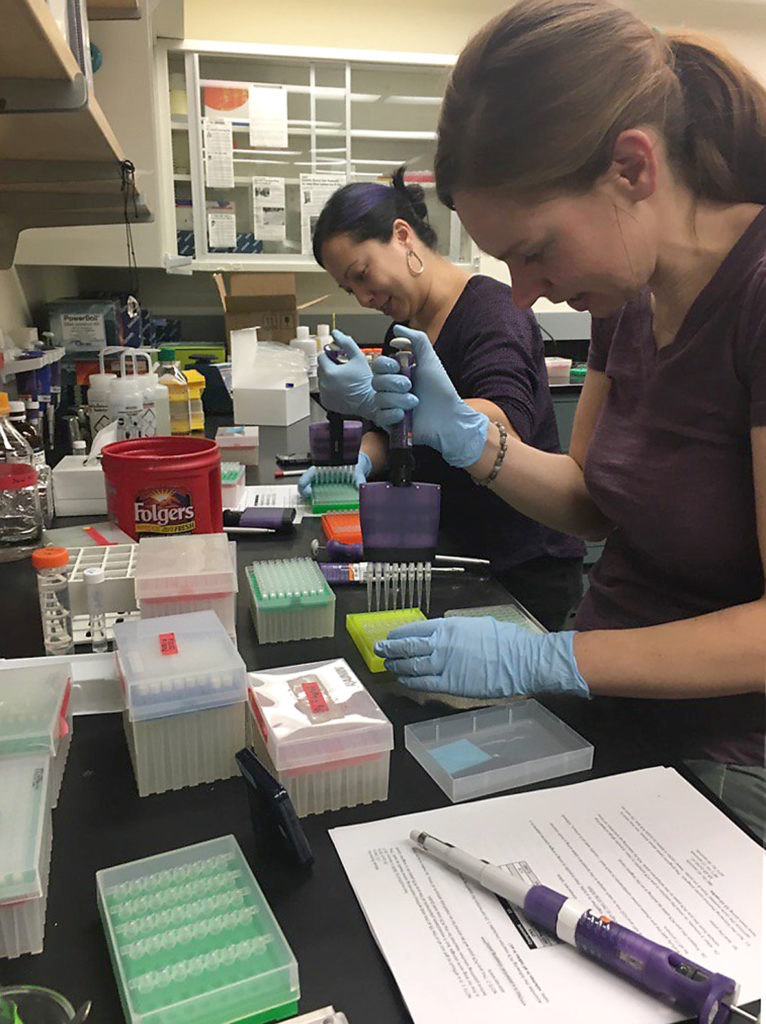
Conducting UCE phylogenomics training at Field Museum in Chicago. (© Corrie Moreau)
MNB: Well, it’s not too late, so who knows? And what about the methods you use – have you seen any big changes in the time since you started?
BB: My graduate career was just at the cusp of the “next generation sequencing revolution”. So I saw some people who were already starting to use phylogenomic methods, sequencing thousands of phylogenetic markers rather than just a few genes – like I did for my PhD dissertation. So I was just at this transition zone but didn’t have the funding to do it. But now, we’ve totally switched to using the new technologies. Other than that, I was doing a lot of morphological observation for the taxonomic part of my dissertation work, but I don’t really get to do that a lot anymore as it is very time consuming, as you know, and also limited in term of where you can publish the research. I don’t really get to do taxonomy at all, which is a shame, so hopefully I can go back to it. Now, I mainly do high-level systematics, where I can use molecular data.
MNB: But you gave us back Colobopsis, so your work does have a big impact on taxonomy! And if you try to extrapolate from all the recent developments, what do you think will be hot topics in ant research in the next couple of years?
BB: That’s a good question. We’re getting the higher-level issues figured out now, revising tribes etc., so I think we’re going to have to work on more species-related issues and species-delimitation, where species boundaries lie… I had a lot of issues in my dissertation, where I just had to lump a couple of widespread species into one, just because I could not tease the species boundaries apart. I think once we’ve sorted out those higher level issues, we’ll probably go back to a finer scale and do more population genomics. At least that’s where I see my research going, because there are only so many ant tribes to figure out.

Climbing trees to collect arboreal Crematogaster ants in Madagascar. (© Andry Rakotomalala)
MNB: Sure, that sounds very plausible. But if you hat to push the “restart” button and be back at the very beginning of your career, would you do anything differently? Or would you even do something completely different – was there ever a plan B?
BB: Well, I actually studied forest sciences in Germany, not biology. Then I got roped into forest entomology, and that’s how I ended up being a true entomologist and eventually studying ants. Sometimes I think about what would have happened if I had stayed in forestry. I still love being in the forest, I love trees and tree ecology, so I still wonder… But it’s not something that I regret.
MNB: OK, that’s good. Do you have any favourite anecdotes from your field or lab experience, anything really funny, challenging or scary you like to tell people about?
BB: Yes, I had a lot of fun experiences in the field. I think probably the most memorable experience was in Madagascar, when I got stuck in a cyclone in the field. I was still a PhD student and it was just me, a field assistant, and a local field research team. There was a lot of rain within a very short time, and we were in a high-elevation camp at almost 1800 m above sea level in an already very soggy forest. It kept raining and raining, and we were just sitting under a tarp, unable to work. Our guide started getting more and more worried because we had to cross several rivers on our way, which were already very swollen. It wasn’t a scary experience because I felt comfortable with the expertise of the local people, but it was my birthday. So I spent my 30th birthday sitting under a tarp in Madagascar. We started rationing food for a day or so, but then the guide decided that we had to try to get back. At the first river, a tree had fallen so we could walk over – in my case, I didn’t do it very gracefully. But the last river, which was the boundary of the forest reserve, was about 30 m wide, so we spent half a day sitting at the shore, discussing what to do. Eventually, we saw some people on the other side and they decided to build a raft for us. One of my most glorious moments in the field was when I got to use my tree-climbing equipment, my slingshot, and my rope, to get that raft from the other side of the river! After that, we still had to hike for about eight hours, so that was quite an experience.

River crossing with makeshift raft during field work in Madagascar after heavy rains. (© B.B. Blaimer)
MNB: Wow, so obviously you made it back ok! What would you say is your favourite thing about being a myrmecologist – apart from celebrating your birthday under a tarp?
BB: Being able to look at cool ants under the microscope – at least in theory. And also interacting with other great scientists who study ants. There are so many really nice ant biologists, so we have this great community of people to collaborate with. In other fields, some people don’t really get along, but the ant community is just great, and we’re all pretty lucky to be working with each other!
MNB: I absolutely agree. Let’s get a bit political for a second – we are both women in science, so what are your experiences regarding gender equality in your field? What about the situation for employees or students with children?
BB: There is definitely not equality. There is currently a lot of talk at my institution about trying to achieve it. At the entomology side of our department, we have only three women, so it’s not fifty-fifty. I don’t have children, but when I think about having them, I don’t know how I would manage. There are people in my department who do it, but I think women usually carry the larger burden. When both parents are academics, it’s usually the woman who has to cut back on her career and that does impede many women. I’m conscious of that especially when I have postdocs or grad students who might want to have kids. There are currently none in my lab but definitely some at the institution who are managing somehow; but then they are not both academics. One person needs to take on more of the additional duties with having kids. About 50% of grad students here are female, but then many women drop out at the postdoc stage, when they decide to have kids. So promoting gender equality and racial diversity is definitely an important topic but I think we’re getting better.
MNB: Thank you! On to some lighter topics and shorter questions – Is there anything you wish everyone knew about ants?
BB: That all workers are female!
MNB: Do you have a favorite morphological structure or ant-related phenomenon?
BB: The petiole.

Identifying ants at E.O. Wilson Laboratory. (© L. Chamorro)
MNB: Is there any particular situation in which you typically have these “lightbulb moments” – awesome ideas for research or for solving a difficult problem?
BB: When I work out in the gym.
MNB: Do you have any good advice for newbies in the ant world?
BB: Find a good mentor!
MNB: What question are you asked most often when people hear you work with ants?
BB: How do I get rid on the ants in my kitchen?
MNB: Ha! That just happens to be our next question! So, how do you get rid of them?
BB: Don’t leave any food lying around.
MNB: What’s the book on your bedside table?
BB: Currently, a book on the geology of North Carolina.
MNB: If in another life you were to be reborn as an ant, which ant would that be?
BB: That’s a difficult one… I think I would be Terataner.
MNB: Watching or doing sports?
BB: Doing sports.
MNB: Listening to or making music?
BB: Listening.
MNB: Evening or morning?
BB: Morning.
MNB: Tea or coffee?
BB: Coffee!
MNB: Sugar or sweetener?
BB: None.

MNB: Cooking for yourself or eating somewhere else?
BB: Eating somewhere else.
MNB: Habit or change?
BB: Habit – unfortunately.
MNB: Aspirator or forceps?
BB: Depends on the ant… aspirator.
MNB: Nest densities or pitfall traps?
BB: Nest density.
MNB: Field or lab?
BB: Field.
MNB: Pin or ethanol?
BB: Pin.
MNB: Paper or PDF?
BB: PDF.
MNB: Open access or subscription journals?
BB: Open access.
MNB: Kin selection or group selection?
BB: Group selection.
MNB: Monodomy or supercolonies?
BB: Supercolonies.
MNB: Worker or queen?
BB: Worker.
MNB: Your favourite ant?
BB: Crematogaster.
MNB: Wonderful! Is there anything else you would like to add?
BB: I think you pretty much covered breadth of me – it was really fun!
MNB: It was great to do the interview with you! Thanks and have a nice day!
References
Blaimer, B.B., Brady, S.G., Schultz, T.R., Lloyd, M.W., Fisher, B.L. & Ward, P.S. 2015: Phylogenomic methods outperform traditional multi-locus approaches in resolving deep evolutionary history: a case study of formicine ants. – BioMed Central Evolutionary Biology 15: art. 271.
Ward, P.S., Blaimer, B.B. & Fisher, B.L. 2016: A revised phylogenetic classification of the ant subfamily Formicinae (Hymenoptera: Formicidae), with resurrection of the genera Colobopsis and Dinomyrmex. – Zootaxa 4072: 343-357.
Blaimer, B.B., Ward, P.S., Schultz, T.R., Fisher, B.L. & Brady, S.G. 2018: Paleotropical diversification dominates the evolution of the hyperdiverse ant tribe Crematogastrini (Hymenoptera: Formicidae). – Insect Systematics and Diversity 2: art. 3.


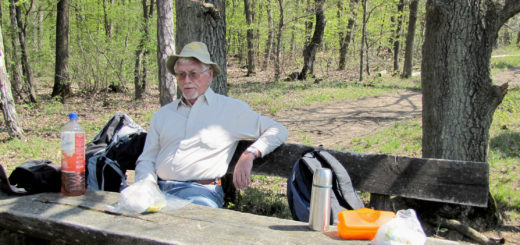
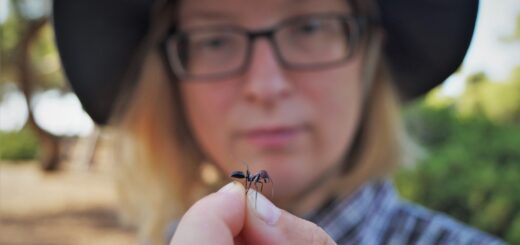
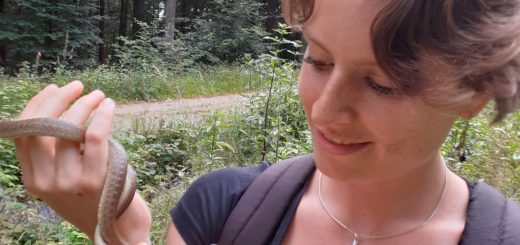
Recent Comments